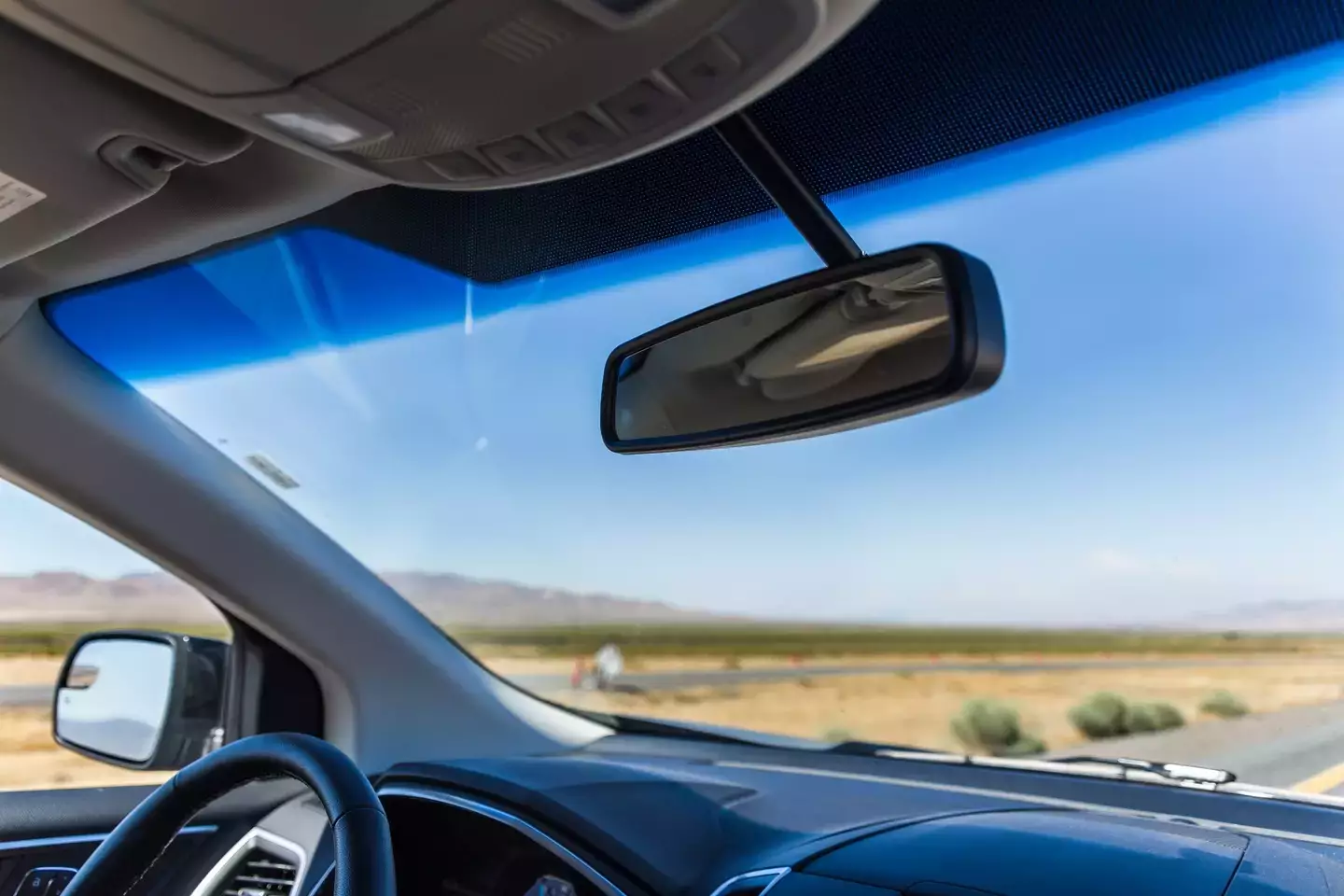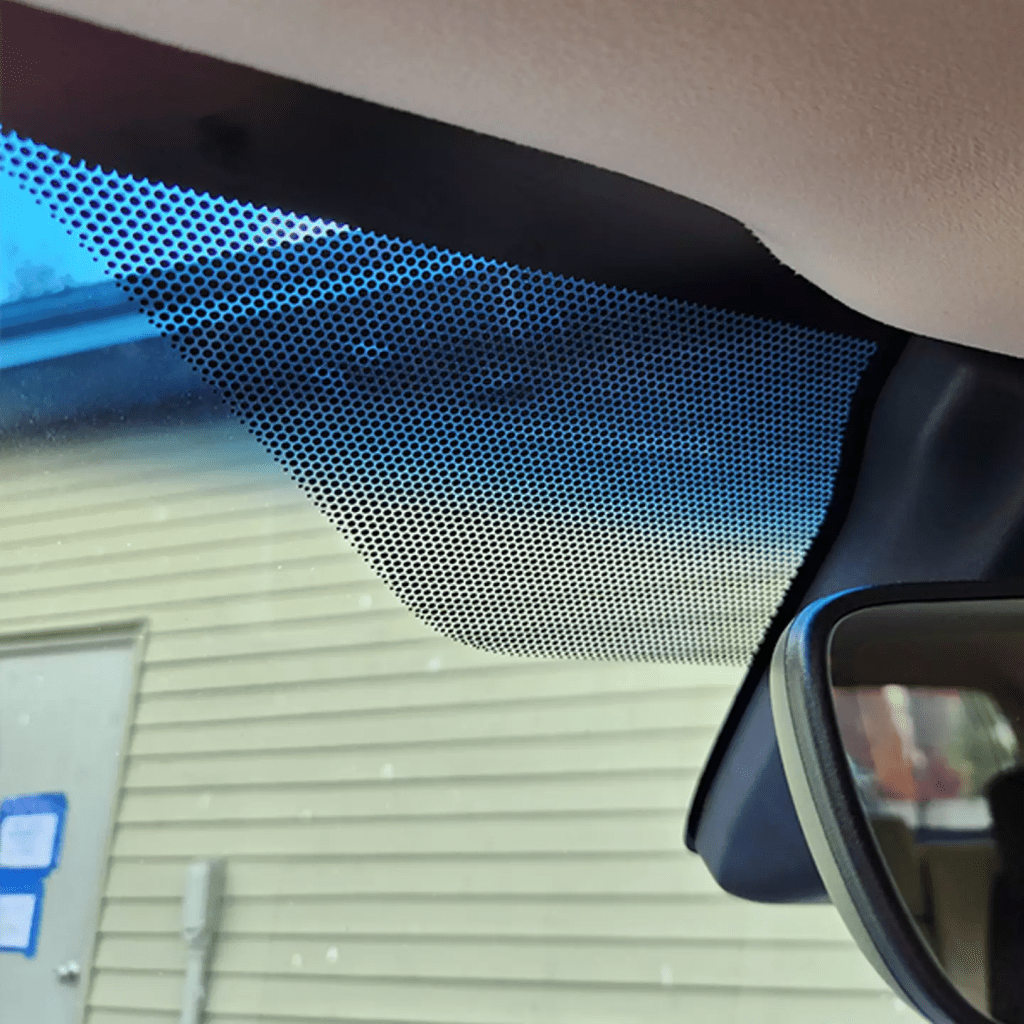If you’re like most drivers, you’ve probably stared at the small black dots on your car’s windscreen and wondered what they’re there for. Are they just a decorative touch, or do they serve a real purpose? It turns out that these black dots, known as “frits,” have both functional and aesthetic benefits. Let’s dive into what makes these dots so crucial and the science behind their design.
What Are the Black Dots on Windscreens?

The black dots you see on car windscreens are part of a feature known as the “frit band” or “dot matrix.” This design is far from just decorative; it plays a key role in the performance and longevity of the windscreen. The frit band, located along the edges of the windscreen, starts with a solid black band that gradually transitions to dots, creating a subtle fade effect.
These dots serve a more important purpose than most people realize, helping to distribute heat evenly, protect adhesives, and prevent optical distortions. Let’s break down each of these functions to understand why they’re such a smart design choice.
Temperature Control: Even Distribution of Heat
One of the primary purposes of the frit band is to help manage the temperature on the windscreen. Glass expands when heated, and an uneven temperature distribution can lead to cracks or optical distortions that interfere with visibility.
The black band heats up faster than the rest of the windscreen, particularly on sunny days. However, the dot matrix helps to gradually spread this heat from the black band to the clear glass. By dissipating heat across the windscreen, the frit minimizes “lensing” effects, where parts of the glass can appear curved or distorted, affecting how straight lines appear on the road.
Preventing Optical Distortion: Reducing Vision Issues
Optical distortion, or lensing, can be a serious issue for drivers. When one part of the glass heats up faster than another, straight lines can appear curved or distorted. This distortion can be distracting, and, in extreme cases, it could make it harder for drivers to judge distances accurately.
The design of the frit band helps reduce this distortion. According to Autoglaze experts, when the black frit band heats up rapidly, it can warp the view through the windscreen. However, the gradual pattern of dots helps prevent abrupt temperature changes, distributing heat evenly and reducing the risk of visual distortions. As a result, you get a smoother and safer view of the road ahead.
Bonding the Windscreen to the Frame: Strengthening the Seal
Another crucial function of the black dots is to enhance the bond between the windscreen and the car’s frame. The black band and dot matrix create a slightly rougher surface, which makes it easier for the adhesive used to attach the glass to the frame to stick effectively.
The rougher surface provides a better grip for the urethane sealant used in the installation process, keeping the windscreen securely in place. This bond is essential, as the windscreen plays a key role in a vehicle’s structural integrity. If the adhesive bond is weak, the windscreen could be at risk of loosening or cracking over time. The frit band helps protect this bond from UV rays, moisture, and other environmental factors, extending the durability of the adhesive.
UV Protection for the Windshield’s Sealant

In addition to strengthening the adhesive bond, the black band serves another critical function: blocking UV rays. The urethane sealant used to attach the windscreen to the frame is sensitive to UV light, which can weaken the adhesive over time. The solid black band blocks out UV rays around the edges, preventing the adhesive from degrading and helping the windscreen maintain a solid hold on the frame.
This UV protection not only preserves the adhesive but also keeps the windscreen firmly in place, especially during high speeds or in the event of an accident.
Subtle Transition from Glass to Frame: Aesthetic Enhancement
While the primary functions of the frit band are related to safety and durability, it also provides an aesthetic benefit. The black dots create a gradual transition from the solid black band to the transparent part of the windscreen, which helps the windscreen blend more smoothly with the car’s frame.
Without the dot matrix, the transition between the black band and the transparent glass would be harsh and visually jarring. By using a fade effect with smaller dots, the frit band softens this boundary, making it more appealing to the eye. This design choice may be subtle, but it enhances the overall appearance of the windscreen and gives the car a sleek, polished look.
Debunking Myths: Common Misconceptions About Black Dots
Many people have speculated on the purpose of these dots, and not all the theories are accurate. Here are a few myths debunked:

- Myth: The Dots Are for Defrosting the Windscreen
While some people assume the black dots help defrost the windscreen, this isn’t their primary purpose. The actual defrosting elements are usually thin heating wires embedded within the glass. - Myth: The Dots Are Just for Decoration
While the dots do provide an aesthetic benefit, they’re there mainly for functional reasons—temperature control, UV protection, and adhesion. - Myth: The Dots Improve Privacy
Although the dots do make the edges of the windscreen slightly darker, they don’t actually improve privacy. Their purpose is strictly related to safety and design.
A New Appreciation for the Humble Frit Band
With all the complex technology in cars today, it’s easy to overlook simple features like the frit band. However, this simple design element plays a surprisingly important role in both safety and aesthetics. By controlling temperature, reducing optical distortions, protecting adhesives, and enhancing the appearance of the windscreen, the frit band quietly contributes to a safer and more visually appealing driving experience.
Conclusion: Next Time You Notice Those Black Dots, You’ll Know Why
Next time you’re sitting in your car, waiting at a stoplight or parked under the sun, take a moment to appreciate the humble black dots on your windscreen. They may seem inconsequential, but they’re there to make your drive safer and your car’s glass more resilient. The frit band is a small detail that showcases how thoughtful engineering can improve everyday experiences in ways we often overlook.


